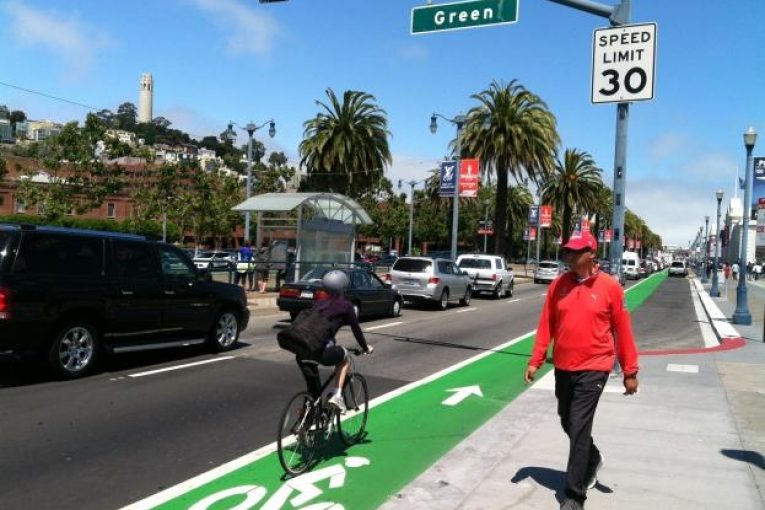


By Mark Dempsey
It’s often hard to imagine local connections to global issues, but returning to a traditional way of building cities could cut vehicle miles traveled (VMT) in half, make transit viable, make a neighborhood’s inhabitants healthier, and its infrastructure would be half as expensive to maintain. Lower VMT means less global warming. Healthier communities mean less expensive healthcare.
Home buyers favor this kind of development, too, paying premiums to live in such neighborhoods, yet few local jurisdictions in California default to such neighborhood design. Traditional neighborhoods mix uses, scattering commerce, offices and even light industry through residential neighborhoods of a variety of densities.
The state of California already mandates new development build “complete streets” that accommodate pedestrians and cyclists as well as autos.
One Southern California Association of Governments study demonstrated that pedestrian-friendly, mixed-use is also the only way to significantly cut traffic congestion. Mixed-income neighborhoods would scatter apartments among the mansions, and mixed-use makes owning a car optional, since walking to the store or transit stop is a possibility.
The covert “tax” of sprawl–the alternative to traditional neighborhoods–is that every driving-age adult must own a car.
Widening streets–even double-decking freeways does not cut congestion. Wider streets encourage more traffic in a phenomenon called “induced demand.” Often as little as six months and millions of dollars after widening streets the congestion returns to the previous level.
And no, even if you keep your receipt, you don’t get a refund for the millions spent widening streets. Sprawl streets discourage walking.

The sprawl twelve-foot travel lanes are identical to freeway lanes designed for 70 m.p.h. traffic. Because of their width, these wide sprawl streets are such an invitation to speeding that standard when they were built required them to bend every 1,000 lineal feet. Otherwise speeding cars on tertiary residential streets would be mowing down the neighborhood kids.
Wide sprawl neighborhood streets bend to slow speeding traffic their width otherwise invites—spaghetti streets are a safety measure. Wouldn’t it be cheaper and more sensible just to build streets narrower in the first place?
Still, the default for far too much new development is “sprawl”–a pattern of building that separates uses–commerce, residences, offices–and connects them exclusively with single-occupant-auto commutes.

Odd, meandering sidewalks do exist in sprawl, but they discourage pedestrians. On busy streets, the sidewalks are right next to fast-flowing traffic, if they exist at all. One report noted the Sacramento region would have to spend $50 million just to connect all the disconnected sidewalks.
Traditional neighborhoods also allow elders to age in place if they cannot drive. The over-85 demographic is one of the fastest growing, too.
All-in-all, traditional, low-impact building locally can contribute to reducing global warming, making healthier neighborhoods, and even providing a partial remedy for the banana-republic level of income inequality that afflicts the U.S. now.
One more thing: you can sign a petition to encourage traditional development here. Feel free to share.